Posts Tagged → collectible
Recent gun “buy backs” hugest waste of money and time
Leave it to people who are so consumed with hate that they can’t think straight to make a solid public policy, and so they expend public time and funds on really stupid things.
We are talking here about the hate that so many elected officials (99.5% of whom are registered Democrat Party) have for firearms. Firearms that otherwise secure our police forces, secure our armed forces, secure food for the table, and secure our private homes and personal bodies from violence. Firearms by themselves never did anything to anybody, but if you are an ineffective elected fool, and you are looking to make some kind of statement about how effective you are to people who are easily impressed, you do a “gun buy back.”
Such foolishness recently happened here in Northampton County, Pennsylvania and in Utica, New York.
Never mind that there is no “back” in the gun buy-back, because the guns being purchased never belonged to the official buyer. But hey, fools are gonna fool, especially with foolish sounding policy names, and so we get these mis-named public gun purchases in mostly Democrat-run towns and counties. *I grew up in a rural area where the Democrat Party was heavily represented. Today, not one person out there is a registered Democrat, because this political party has gone off the rails.
Public funds are expended to buy guns, with great fanfare and yet very little or no gain in public safety. Usually the public message goes something like this: “If our purchase of guns here today stops just one mistaken shooting, just one crime, just one accident, why then this is all worth it.”
Which is of course more foolish nonsense. The same communities are often wracked with violence and epidemic official failure, causing hundreds of local citizens to die unnecessarily and prematurely every year. But the “just one life” thing always sounds so serious.
Never does anyone ask What if these guns were used instead to defend our borders by state militia in Arizona, or New Mexico, or California, or Texas? Think about how many lives THAT would save, given how many drug and drug violence deaths are being walked across America’s open southern border right now. These guns in the hands of private citizens defending the American border could probably save hundreds of thousands of lives!
Or, what if the local police put on a gun safety program and taught these same private gun owners with little firearms experience how to safely shoot and store their guns? They would probably make their homes so much more safe and crime-resistant!
When all of the potentially saved lives are compared to the one or two potentially, theoretically, possibly saved by the “gun buy-back,” then we see these gun buy-backs a) don’t save lives and b) are a waste of public money.
What really strikes the eye in these publicized public firearm purchases are the purchased firearms’ low quality, the large number of antique black powder guns that have not hurt anyone since the 1860s, the valuable historic and collectible guns that should be sold to raise money for public agencies, and the simple hunting-grade weapons that leftists tell us they never ever want to take away from us. And all of the hunting ammunition! Destroying this stuff is the crime!
Why don’t the police use the ammunition for police officer training? Why destroy something so valuable as ammunition?!
And since when does the government rip off private citizens, paying them literally pennies on the dollar for high value guns, and then instead of monetizing that public money investment, the government employees then destroy the high value property?
Why doesn’t the government have an appraiser on site who can advise private citizens about the actual high value of the old gun the local government is offering them $75.00 for? Why is ripping off local people a good policy?
In Utica, New York, roughly $30,000.00 of public money was spent on purchasing… “ghost guns,” which is a political term, a loaded term, and a fake term to describe guns that are manufactured off the grid. And you know what? Those “ghost guns” that sound so dangerous and scary to the New York Attorney General… they were printed on a 3-D printer! In other words, they probably cost a few bucks each to make, and then the public mis-paid the owners hundreds of dollars each.
How does any of this make sense?
And yet all of these guns and the ammo are destined to be destroyed. So say the unquestioning mainstream media fools, who stand up in front of the cameras and parrot the talking points they are handed. Hint to the paid media people: You got a degree in “journalism,” I think because you were supposed to be…journalists? What kind of a journalist doesn’t ask questions, especially of those in positions of political and official power? (Answer is: Mainstream media people are not journalists and they do not ask questions. Instead they parrot narratives given to them by leftist government employees).
So we here are doing the job of the “journalists” who appeared in writing and on TV with the articles and reports about the gun purchases in Northampton County, PA, and Utica, NY. We are asking the simple questions, and making the simple points that these are not intelligent uses of official time or money. But then again, we do not begin at the assumption that destroying any and all firearms is the right and intelligent thing for government to do, because we are not filled up with mindless hate for inanimate objects.
[Question to the pro 2A activists in Northampton County: Why not sue this nincompoop of a DA, Terry Houck, and demand that he at least assess the market value of these guns before having them destroyed? In no other area of government do people get rewarded for destroying valuable public property]
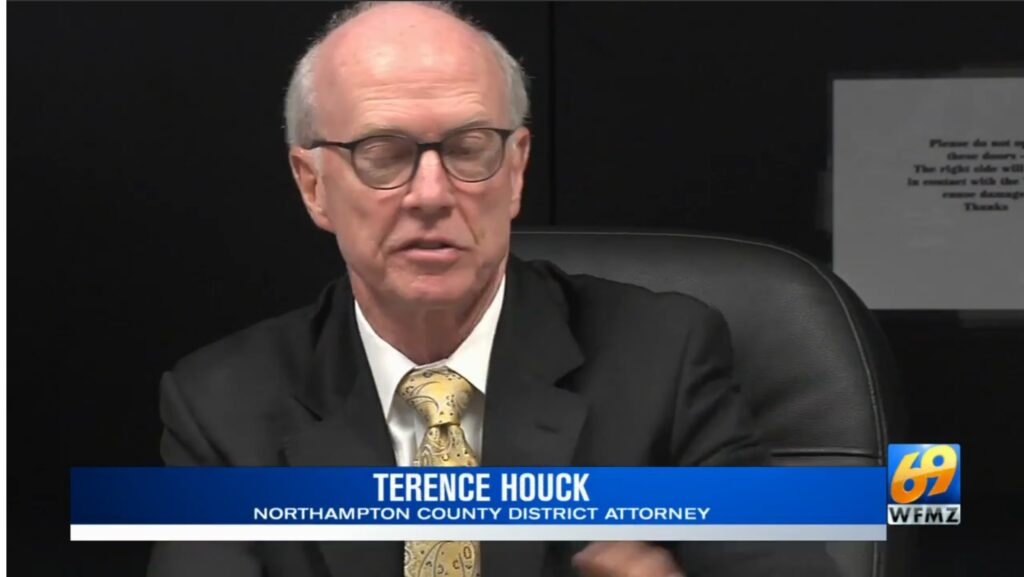
Terry Houck is Northampton County’s idiot DA, who takes great pride in knowing zero about the collectible, valuable guns he is destroying
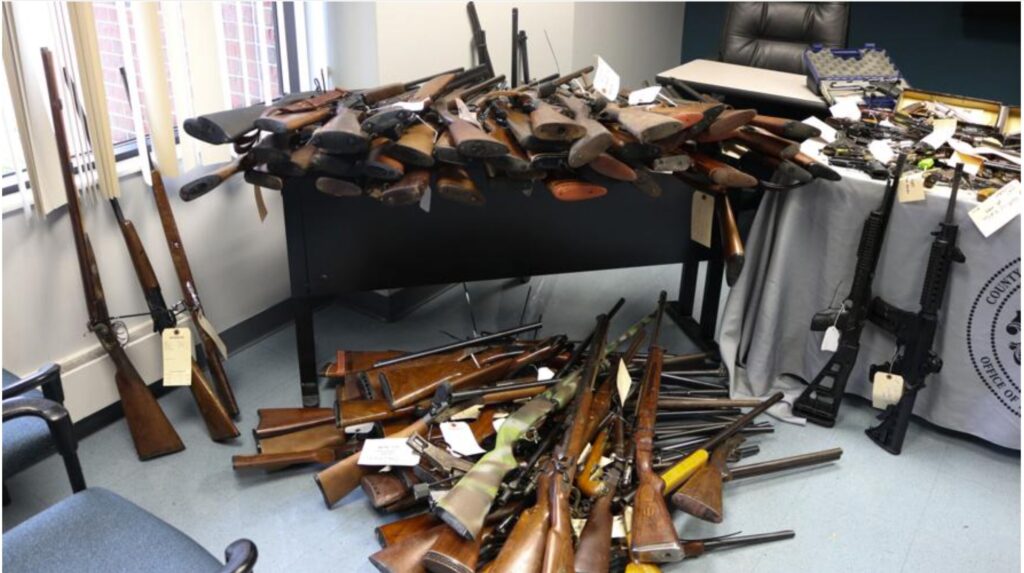
Flintlocks, black powder percussion guns, hunting shotguns, single shots, highly collectible and valuable Veteran bring-back guns from Europe, all said by DA Terry Houck to be dangerous. And yet…none of these are associated with crime. And therefore they are not dangerous.
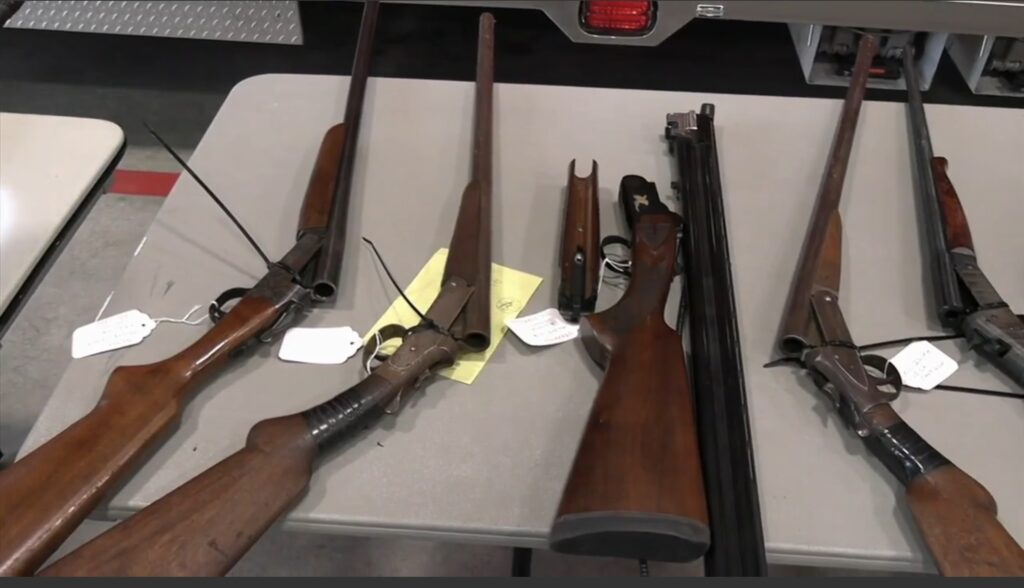
These are not the kinds of guns used in crime. Simple single shot shotguns and one really valuable over-under hunting shotgun, all destined to be destroyed. For no public benefit at all. Just to make fools feel good about themselves
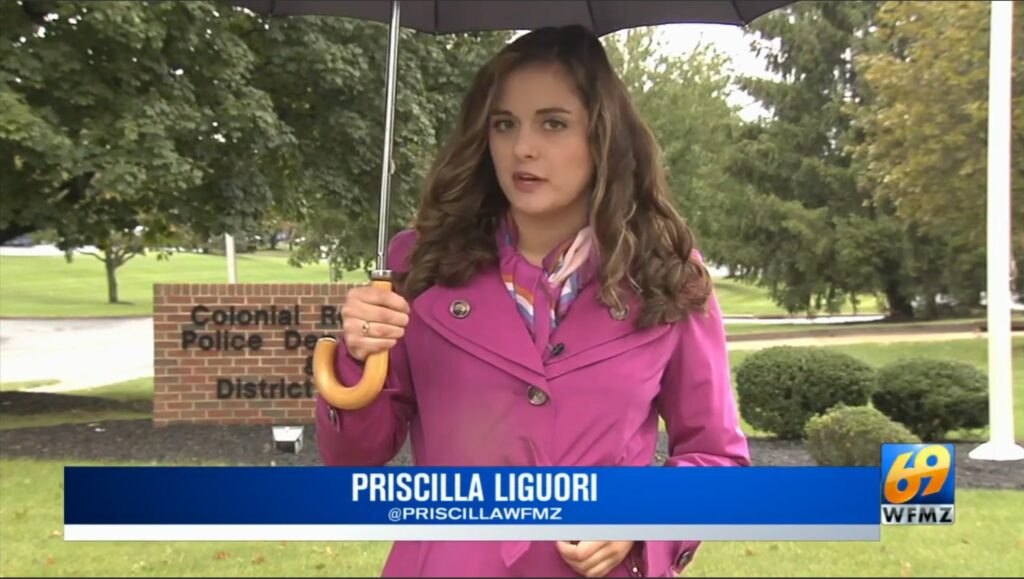
If you stand in front of a camera and talk like a parrot, are you a journalist? Priscilla Liguori asked no questions, committed no acts of journalism in the making of her report about Northampton County’s gun purchases. One more big mainstream media failure
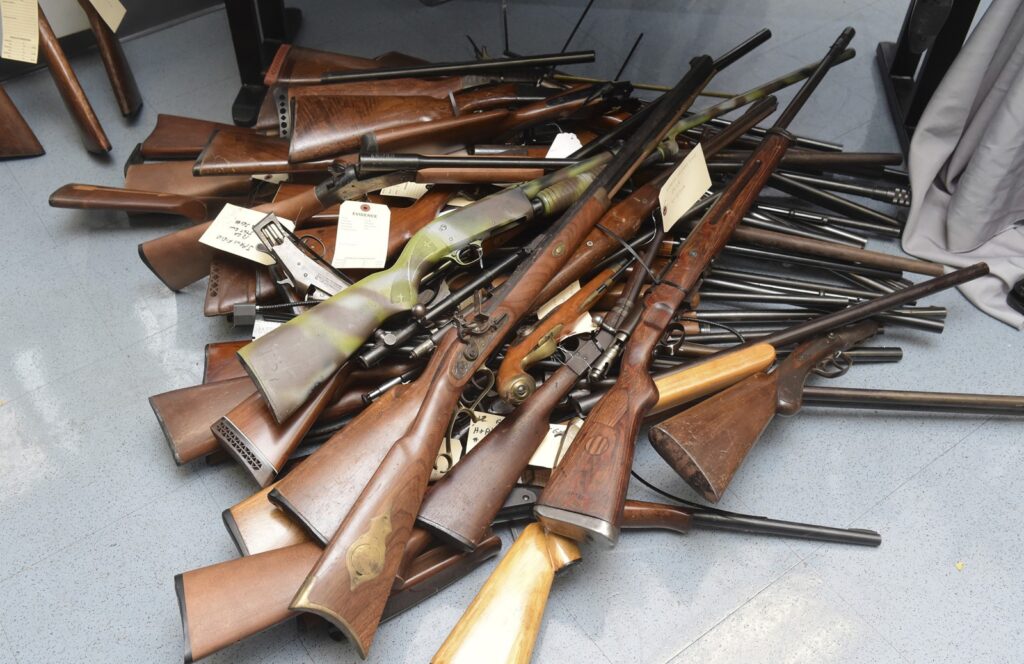
The green-colored gun is a Remington 20-gauge pump shotgun used for hunting birds and rabbits. The rifle at the far right bottom with the rounded pistol grip is a high value Veteran bring-back gun from Europe that never hurt anyone. The gun at the very top of the heap is a single shot black powder FLINTLOCK muzzleloader used to hunt deer; with 1790s technology, it has zero potential use in crime. Only hatred-filled firearm prohibitionists cheer on the destruction of these useful and safe recreational and collectible guns.
First World Problem: Antique Arms Collectors Now Face Mostly Fakes
This headline is probably ho-hum to most people, at best.
To others, it is a “here we go again, another whine-fest by history buffs who spend their money badly on old rusty junk.”
But if you are indeed a history buff with a penchant for old weapons, both edged and those that go BOOM, you may be interested in this post.
My opinion is that most antique weapons collectors are facing an overwhelming amount of fakes.
Much more so with Japanese swords, so let’s discuss them first.
Used to be that finding a Gendaito blade was unusual; maybe one or two a year. Now, you go on eBay and find the same several sellers conveying dozens of them annually. Wakizashis, katanas, even various sized dirks and tantos etc.
These must all be fakes, as there simply were not this many Gendaito blades in existence before Chinese smiths began to create them in about 2011. Having watched these counterfeits move at an ever brisker pace, I simply feel sad. At some point the uninformed collectors will discover their money has been taken for what is a very good reproduction that is probably worth a thousand bucks, simply because it is that good of a copy. But it ain’t real.
Smith-made (hand made art blades) Shinto blades also fall into this counterfeiting scam by the hundreds annually. Again, there simply were not as many of these blades surviving WWII as there are now for sale on eBay.
With guns, it is harder to fake than a sword, because a gun is obviously a gun. A Winchester 1873 is a Winchester 1873, and its condition usually dictates its value.
What makes some gun values go crazy high are rare or historic marks (the ubiquitous spurious stage coach markings on rabbit eared double shotguns being the best example), which can be easily faked by anyone with good control of a metal punch. This is true fakery and it is an area most collectors know about and do more diligence about.
But let’s talk about the area where it is harder to see what has happened, and harder to call it fakery, though it is: The collectible antique sporting rifles.
Demand is high for antique sporting rifles, because their modern day equivalents cost about $35,000 to start and easily get to $100,000 and much, much higher. So in that context, it “makes sense” to pay $5,000 to $20,000 for an antique sporting firearm that functions as it should, rather than several times that amount for a brand new one that goes BOOM just like or nearly like the old one.
Antique sporting rifles are getting lots and lots of makeovers, both in England and here in America. They are marketed at auction and on websites as having been “period upgraded” or “period refurbished” (say from the 1870s to 1930s), when in fact they were very recently “tarted up” by a gunsmith to heighten their attractiveness to unknowing, unquestioning collectors.
I recently purchased – and immediately returned – such a rifle.
Oh it was a rare dandy, and looking past the hyperbole on the well-known seller’s website, which included an obviously fraudulent claim of “original condition,” there was still a fine gun that could take an American bison or a grizzly. If it worked the simple way a rifle should work, it was the gun of a lifetime. In a rare, hard-hitting caliber that I wanted.
So, I busted a move on it.
After joking on the phone with the salesman about the obviously fake claims of original condition, the seller and I eventually reached agreement on price, and the gun arrived in a couple days. Right out of its original 1895 leather and brass case with the original owner’s name and military rank on it (God, what a case!), the red flags were popping up: Improperly refinished wood had pulled the stock away from the receiver, leaving the stock to accept the heavy recoil on only one side.This meant the stock would crack soon after use.
A punch mark on the barrel lump was testimony to the cheap and meaningless effort to temporarily tighten the otherwise loose action. The list of el cheapo work went on. Yes, the bores were immaculate, but the fact is that this gun had been recently “tarted up” for re-sale, and it had been worn down quite a bit recently. Worn down more by the nature of its heavy caliber than by any misuse by previous owners.
Had the seller simply disclosed these facts, I might have made a more informed decision, and he would have received less money. We would have had full disclosure and an honest exchange. But within 48 hours of receiving it, I drove the gun all the way back to the sales room, three hours away, where the sales manager and the business owner tried to talk me out of the return. The refund check arrived ten days later, with none of the additional costs I incurred like shipping, transfer, gunsmith evaluation etc. They knew full well what had been done to that gun, and they simply got caught, and they punished me by withholding cash they should have covered.
This is one of the big names in high end gun sales.
Today I am looking at another uncommon rifle on a well known auction site. The gun has clearly been recently overhauled for re-sale. The wood finish is as bright and shiny as the new wood floor in a brand new home. The metal finishes look like they were done weeks ago, and not the 117 years ago that is the actual age of the gun. Yet it is marketed as having a “period” refurbish. Rubbish! Nonsense! Buyer be super aware!
This is not total fakery, as no fake numbers or markings have been punched into the metal or wood. Custer did not purportedly grasp this gun as he fell at the Little Big Horn.
Instead, until a few months ago, this gun’s metal parts were probably a mix of silvered and plum finishes, the welcome, honest patinas of hundreds of days afield in India or Africa, or the Scottish Highlands, chasing big game in the hands of a British, Indian, or Scottish Man of Importance. Until months ago, the wood probably looked like hell, was beat to hell, dented, dinged, and scratched, each a story in itself. Not any more! Now it looks so fake and shiny it about blinds the eye.
Shame, too, because under the fakery is a really cool gun.
Apparently the sellers believe that hiring “gunsmiths” to do quick and dirty upgrades to these collectible old sporting arms is more important than selling the actual honest gun, with its actual original wear and condition.
This means the sellers have gullible buyers who ascribe too much weight to new and fresh appearance, when the opposite is true: An original condition gun that has not been butchered or fooled with by a modern day “gunsmith” is actually more valuable.
The key to fending off the faking is educating new gun collectors and buyers to understand this fact: Fresh, new looking antique guns have been shined up to turn them into shiny objects. Don’t be a foolish fish and bite on them, unless you recognize a) what they are, and b) there are probably problems covered up by the new “improvements” that would have been addressed 100 years ago, but are now papered over, and thus, you are not getting what you paid for.
And as for the Japanese swords out there on eBay, man, what can be said? Be super wary. Ask yourself simple questions about production numbers, survivor numbers, and then answer your own question: How on earth is this one seller repeatedly finding so many of these should-be rare swords? Is every American veteran selling his prized Japanese sword to just these few dealers?
You know the answers to these questions. Run away, and hold on to your money.
In closing, buyer beware. Because there are gullible collectors willing to part with their money, there are unscrupulous sellers willing to sell them things that simply cannot be true. It behooves the smart man to ask the simple questions before biting.
Good luck and be patient!